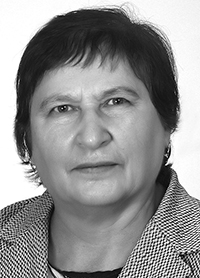NORDIC WALKING AS AN EFFECTIVE MEANS OF DEVELOPING STUDENT YOUTH ENDURANCE
Keywords:
nordic walking, endurance, physical activity, cyclic exercises, student youth.Abstract
Objective of the study was to offer and test benefits of an endurance training Nordic walking model in application to university students.
Methods and structure of the study. We sampled for the new endurance training Nordic walking model testing study (run at Ural Federal University in 2018 to 2021) the Ural Federal University students (n=54, 27 boys and 27 girls) from the non-physical education departments, with the endurance training Nordic walking model tested as complementary to the regular physical education service. Practical Nordic walking trainings included combinations of different practices (standard Nordic walking in a few versions; dorsal muscle group training and physical conditioning practices with sticks; postural control practices etc.). Endurance was tested by the 3km Nordic walking tests (six tests for three years run on a pre- versus post-year basis).
Results and conclusion. The three-year endurance training Nordic walking model in application to university students was tested beneficial as verified by the significant gender group progress in the 3km Nordic walking tests. The gender gap in the progress tests demonstrates the need for the Nordic walking model to be prudently customized and individualized for the students\ actual progress needs, health and challenges.
References
Achkasov E.E., Volodina K.A., Runenko S.D. Osnovy skandinavskoy khodby [Basics of Nordic walking]. Study guide. Moscow: Sechenov First Moscow State Medical University (Sechenov University) publ., 2018. 224 p.
Vladimirov O.A. Lechebnaya dozirovannaya khodba kak novaya sovremennaya forma LFK v sanatorno-kurortnykh usloviyakh: metodicheskie rekomendatsii [Therapeutic dosed walking as new modern form of exercise therapy in sanatorium-resort conditions: guidelines]. Kiev: Olimpiyskaya literatura publ., 2011. 19 p.
Vorotnik A.N., Voinov P.N., Apalkov A.V. Povyshenie fizicheskoy podgotovlennosti kursantov vuzov MVD Rossii sredstvami i metodami razvitiya vynoslivosti [Endurance building means and methods to excel physical fitness of cadets of higher educational establishments of Ministry of Internal Affairs of Russia]. Vestnik Belgorodskogo yuridicheskogo instituta MVD Rossii. 2014. No. 1. pp. 27-31.
Kizko A.P., Zabelina L.G., Kizko E.A. Fizicheskaya kultura. Teoreticheskiy kurs [Physical education. Theoretical course]. Study guide. Novosibirsk: NSTU publ., 2016. 128 p.
Kholodov Zh.K., Kuznetsov V.S. Teoriya i metodika fizicheskogo vospitaniya i sporta [Theory and methods of physical education and sports. Study guide for university students]. Study guide for physical culture universities. Moscow: Academia publ., 2000, 480 p.
Piech K. Nordic walking – a versatile physical activity fit for everyone (a literature review). / K. Piech, J. Piech, Grants J. LASE Journal of Sport Science. 2014. Vol. 5. No 1. p. 46-56.
Seong, D.P. The effects of Nordic and general walking on depression disorder patients’ depression, sleep, and body composition / D.P. Seong, H.U. Seong. The Society of Physical Therapy Science. 2015. Vol. 27. No. 8. p. 2481–2485.

Additional Files
Published
Versions
- 07-03-2022 (2)
- 01-01-2022 (1)

